|

A Radio-Controlled 1:36 Scale Model
Previous Page | Next Page | Table of Contents
click pictures for larger versions
Yet More Plumbing
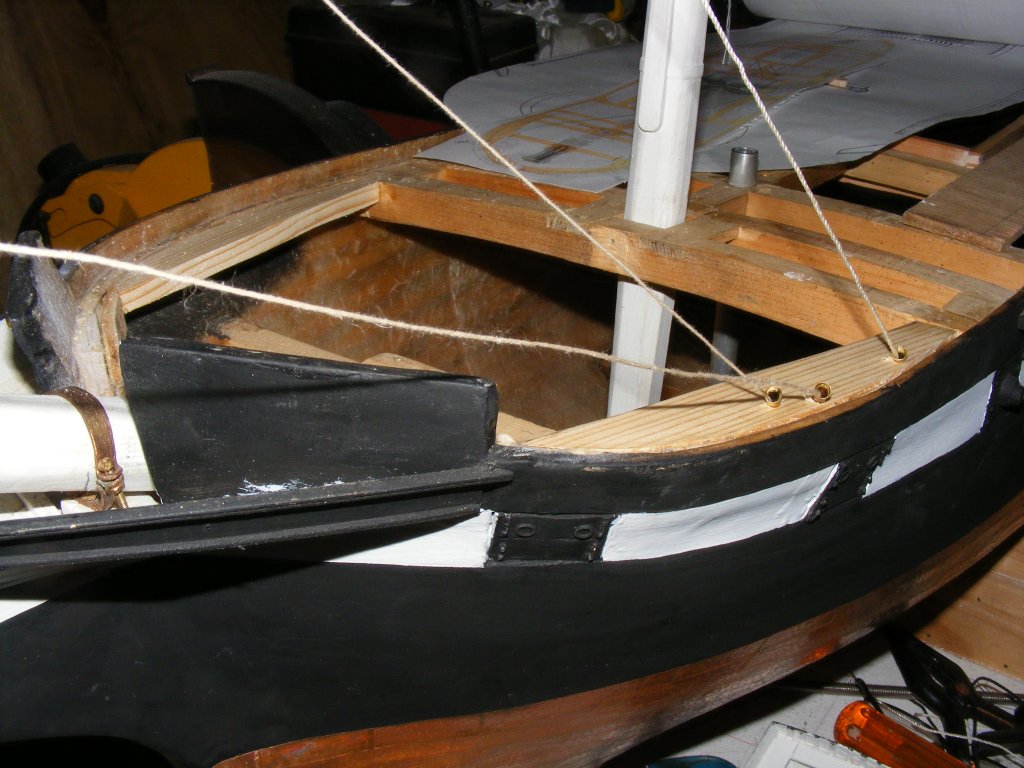 9/18-25/2014: I'm inching along installing the through-deck tubing. They're mostly all epoxied in place; heads'ls, fores'l tacks and sheets, Main tacks, sheets, braces,
and the fore and fore-tops'l yard braces. The driver sheet tube is being a pain. The line is too close to the main brace inside the hull and I'm trying to figure out
the best way to deal with this.
9/18-25/2014: I'm inching along installing the through-deck tubing. They're mostly all epoxied in place; heads'ls, fores'l tacks and sheets, Main tacks, sheets, braces,
and the fore and fore-tops'l yard braces. The driver sheet tube is being a pain. The line is too close to the main brace inside the hull and I'm trying to figure out
the best way to deal with this.
Quarter Boomkins
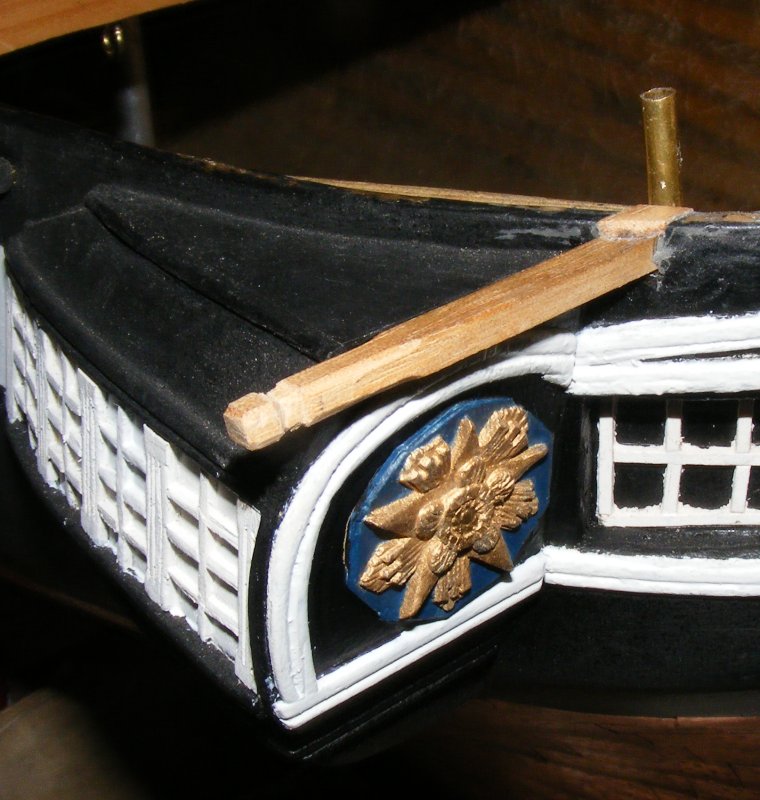 As usual, when I bump into something, I turn and do something else. In this case I made and installed the quarter boomkins, or bumpkins, that carry the blocks for the main braces and main sheets.
The first mention of these things as bumkins in British documents was in 1680 according to James Lees, who refers to them as boomkins through-out his book.
I always knew them as boomkins on the few boats I knew that even had them. These aft ones, for instance, are typically a bit of iron work and referred to as a crane.
As usual, when I bump into something, I turn and do something else. In this case I made and installed the quarter boomkins, or bumpkins, that carry the blocks for the main braces and main sheets.
The first mention of these things as bumkins in British documents was in 1680 according to James Lees, who refers to them as boomkins through-out his book.
I always knew them as boomkins on the few boats I knew that even had them. These aft ones, for instance, are typically a bit of iron work and referred to as a crane.
These I made from some mohoganyish wood that came from pallets, or some other packing material. It's clear and hard and seemed like the right stuff for this job. The bumpkins
are glued to the hull and the back of the quarter gallery. They're also pinned into the hull and the quarter gallery with brass rod, and everything was painted black.
Signal Flags
 9/26: At the beginning of this log I said I was building the model as the ship appeared in 1856 when she was painted by Tomaso de Simone in Naples. In that painting Constellation
flies a signal hoist at her mizzen truck. I've looked everywhere and asked a lot of folks trying to find out what this signal is with no success. I can't even find flags with
those patterns in any signal books going back to 1800! I figure it's a proprietary US Navy signal or De Simone just made it up.
9/26: At the beginning of this log I said I was building the model as the ship appeared in 1856 when she was painted by Tomaso de Simone in Naples. In that painting Constellation
flies a signal hoist at her mizzen truck. I've looked everywhere and asked a lot of folks trying to find out what this signal is with no success. I can't even find flags with
those patterns in any signal books going back to 1800! I figure it's a proprietary US Navy signal or De Simone just made it up.
I know I could just hang the signal and not worry what it means, but I'm afraid down the road someone will pop up and tell men it means Crew Has Clap or something worse.
A conversation on Model Ship World brought the subject up again and someone posted a link to several editions of Captain Marryat's Code of Signals on Google Books.
This publication, dating back to 1816, sets up a system of signal flags and pennants, assigns a number to all the war ships of the then major powers, and all the merchant
ships listed in Lloyd's. The 10th edition, dated 1847, lists the frigate Constellation's number as 564. The next available edition dated 1855 states that since the French
no longer publicly list their naval vessels - no naval vessels are listed aside from those of Great Britain. Darn Frogs.
Assuming that the new sloop of war would retain the number of the namesake frigate she replaced, and being presumptuous, I decided to toss De Simone's signal and send up Marryat's.
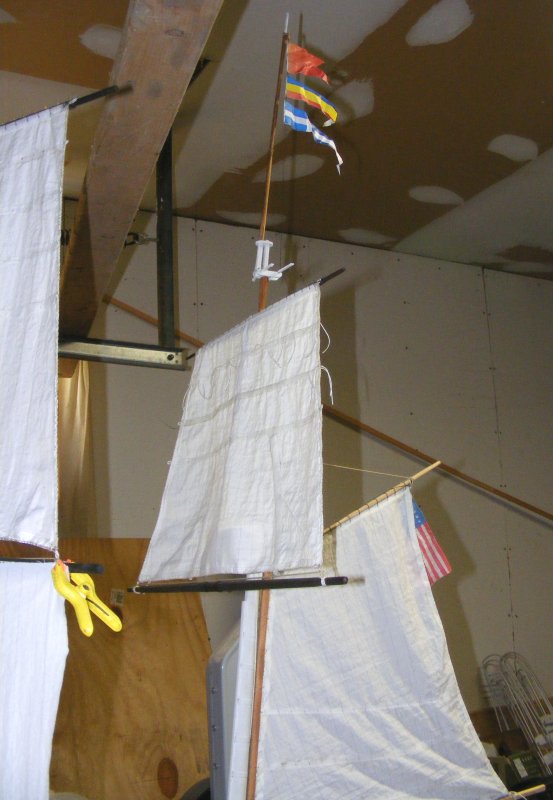
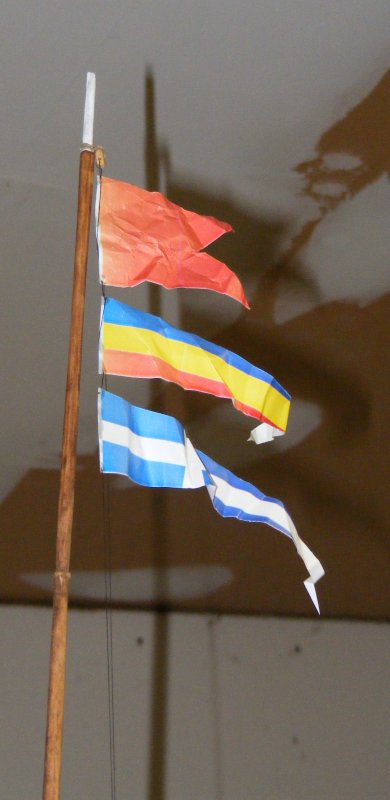 Marryat says; The Flags used in this Code of Signals should be six feet in the standing part and eight in the fly; and the Pendants four feet by eighteen. In 1:36 scale that makes
the flags 2" tall with a 2-11/16" fly and the pennant 1-11/32" tall with a 6" fly. I drew these up to scale on the computer and printed them on the color printer. Yes, they're paper,
but I wanted to see how they'd look up at the mizzen truck.
Marryat says; The Flags used in this Code of Signals should be six feet in the standing part and eight in the fly; and the Pendants four feet by eighteen. In 1:36 scale that makes
the flags 2" tall with a 2-11/16" fly and the pennant 1-11/32" tall with a 6" fly. I drew these up to scale on the computer and printed them on the color printer. Yes, they're paper,
but I wanted to see how they'd look up at the mizzen truck.
Now if anyone sees the model, they can look up Marryat's on their phone and find out what ship she is.
Boomkins
These took a bit of research. None of my plans show them at all, so I spent a lot of time staring at every photo back to 1871
I eventually determined that what the ship has now are pretty accurate. Then I had to figure out their dimensions, and position.
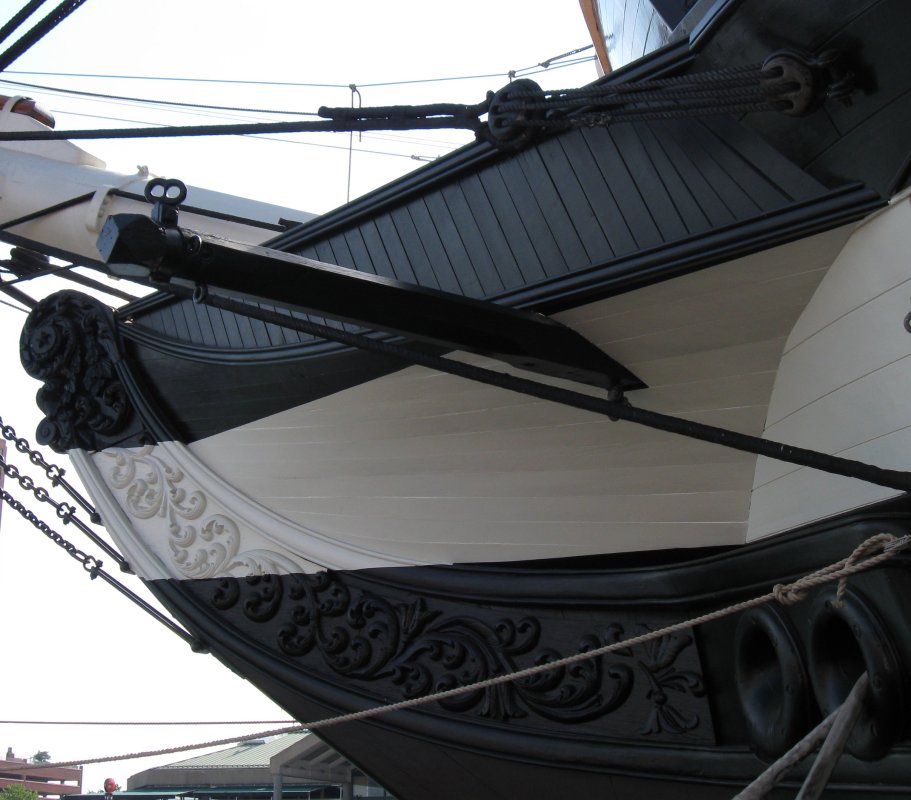 Then I had to gather the courage to make holes in my enclosed head to insert these thing through.
Then I had to gather the courage to make holes in my enclosed head to insert these thing through.
Once I built up the courage to make a hole in my head planking, things moved along pretty smoothly. Looking at a lot of images, I figured out they go 70% back along the length of the head rail;
which worked out to an even 5 inches. The portion of them inside the planking is square, the rest is 8-sided except for the very end which is basically a cube with the corners knocked off.
The hull end is pinned to the hull with a 1/16" brass rod. The boomkin is seated against the hull with epoxy putty which both glues it and fills any gaps.
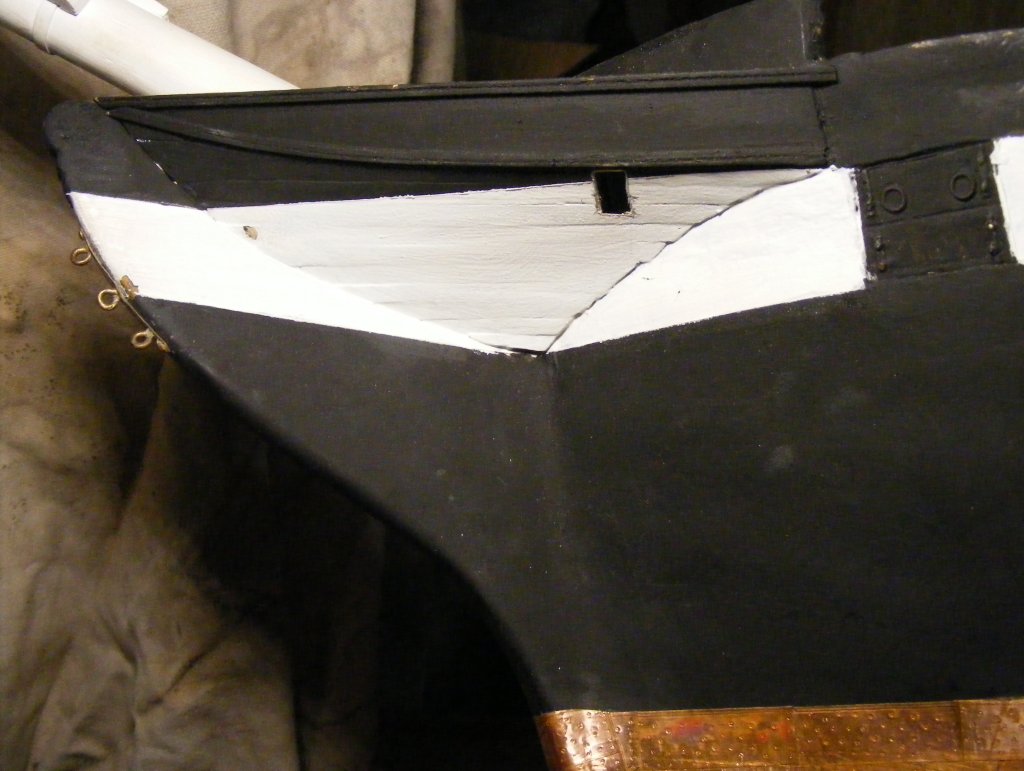
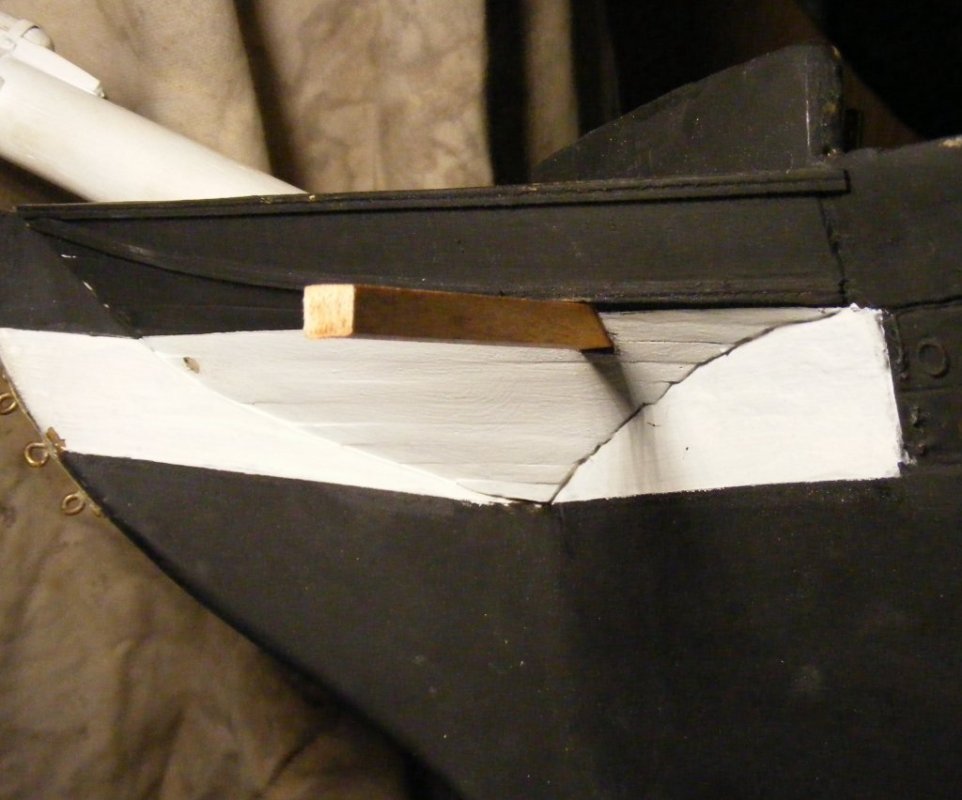
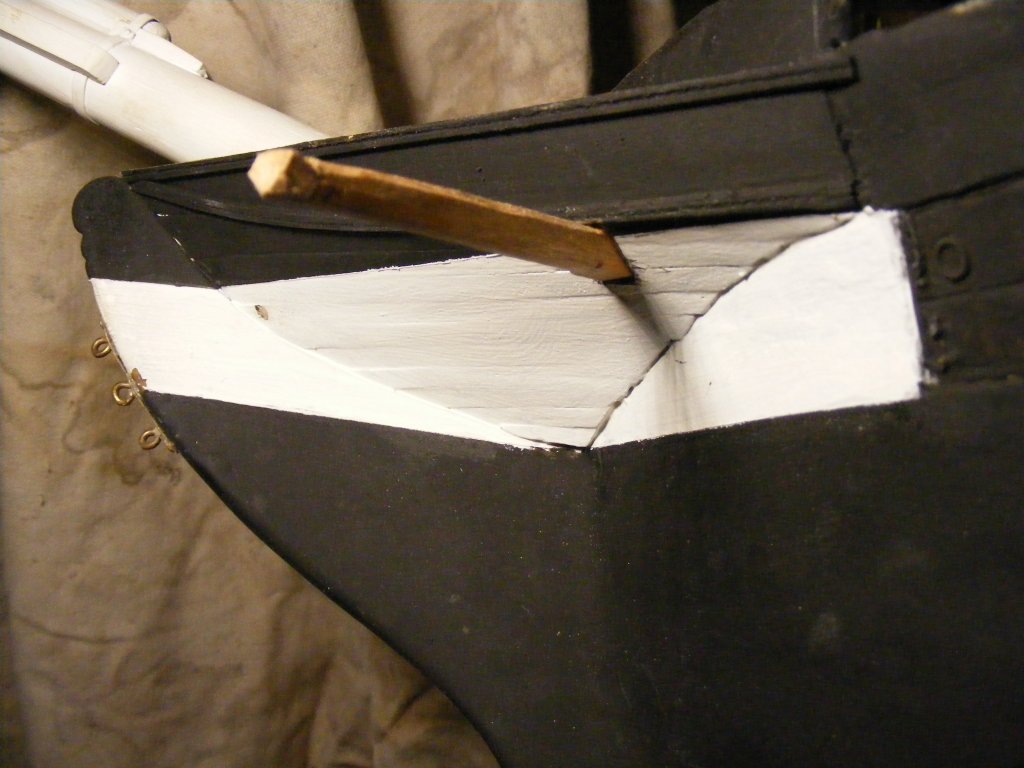
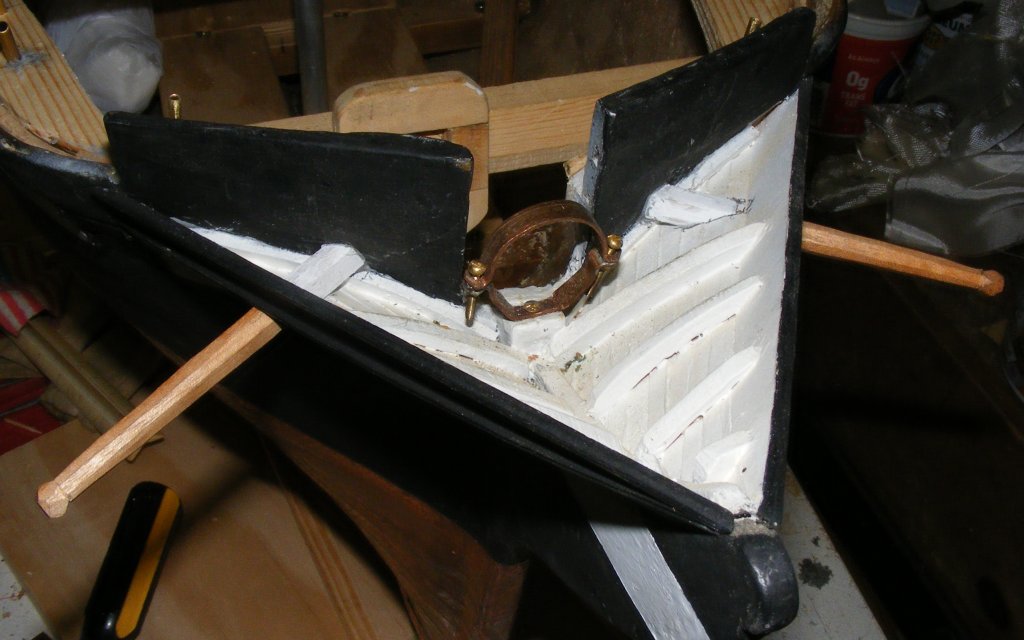
Yards
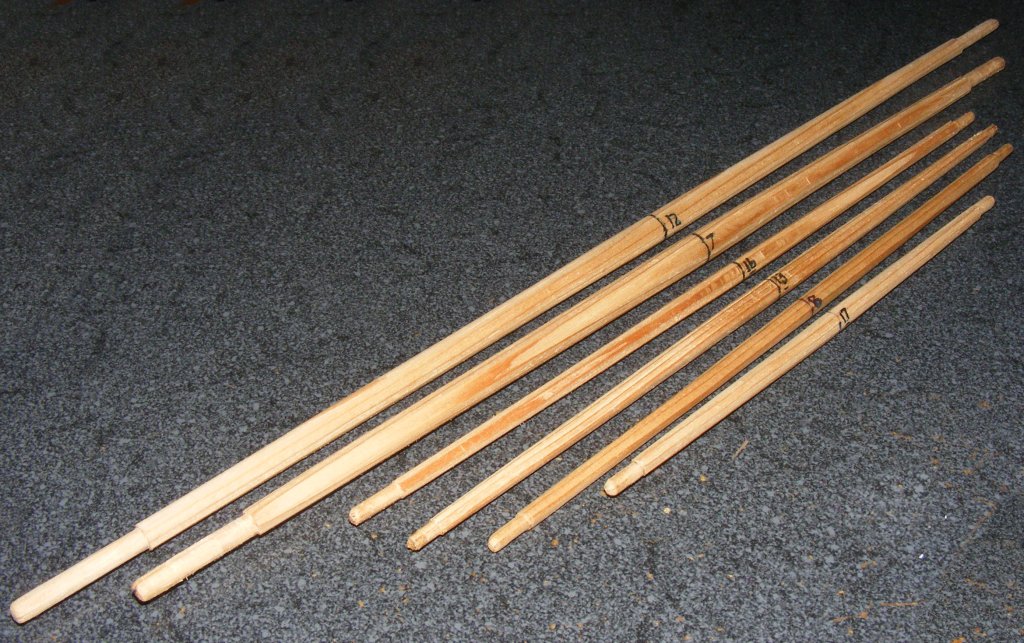 The rest of the yards got shaped. Left to right; Main t'gallant, fore t'gallant, mizzen t'gallant, main royal, fore royal, and mizzen royal yards.
The rest of the yards got shaped. Left to right; Main t'gallant, fore t'gallant, mizzen t'gallant, main royal, fore royal, and mizzen royal yards.
Previous Page | Top | Next Page
|


























